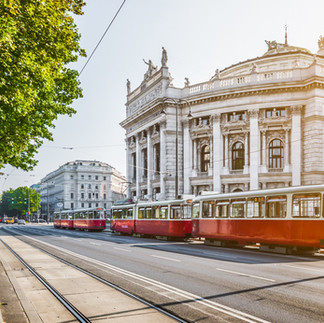The History of Austria: From Ancient Roots to Modern Resurgence
- Marelie van der Merwe

- Jun 1, 2023
- 3 min read
Austria, a country in central Europe, has a long and varied history dating back many centuries. Austria's history is a rich tapestry of cultural, political, and artistic achievements, spanning from its ancient Celtic origins to its role as a hub of the Habsburg Empire and its modern development as a prosperous nation. Let's travel back in time to investigate the fascinating background of Austria.

Celtic tribes once occupied the area now known as Austria, and remnants of their villages and the Roman Empire's influence may still be seen there. But it was during the Roman period that the region really took off. Cities like Vindobona (modern-day Vienna) were founded by the Romans and developed into important commercial and military hubs. The Romans had a significant impact on the development of culture and infrastructure in Austria.
The reign of Charlemagne, King of the Franks and Lombards, and his Carolingian Empire, which included Austria in the eighth century. During the time of Charlemagne, Austria was part of his Carolingian Empire. Magnificent cathedrals, monasteries, and strongholds were built during this time as Christianity spread throughout Europe.
The Habsburg dynasty's ascension to power marked the beginning of Austria's most formative period. The Habsburgs began consolidating their empire in the 13th century by gaining territory and creating partnerships with powerful states. Central Europe and much of the rest of the world were ruled by Austria by the Habsburgs by the 16th century. The Habsburgs' legacy is visible in every aspect of Austrian society.
The Age of Baroque Extravagance and Cultural Prosperity: Austria experienced its zenith in the 17th and 18th centuries. Especially during the reign of Empress Maria Theresa and her son, Emperor Joseph II, the kingdom saw a spectacular cultural and artistic blossoming. Magnificent Baroque buildings were built, such as Schönbrunn Palace, and artists, musicians, and writers such as Mozart, Haydn, and Strauss flourished throughout this time.
After WWI, Austria experienced economic and political difficulties throughout the interwar years leading up to WWII. When Nazi Germany conquered Austria in 1938, a dark period in the country's history began. Austria was conquered by the Allies during World War II, losing its independence and becoming a neutral country in 1955.
After World War II, Austria's top priorities were to restore and solidify its position as a rich and democratic republic within Europe. By declaring its neutrality, the country served as an important link between Eastern and Western Europe during the Cold War era. Austria has been a driving force behind European Union expansion, cultural interaction, and integration during the past few decades.
Today, Austria has worldwide acclaim for her illustrious cultural history, breathtaking natural beauty, and exceptional standard of living. It has produced many notable composers and opera houses, therefore it is often associated with classical music. The tourism, manufacturing, and service industries all play important roles in Austria's thriving economy. The country is also proud of its advanced social safety net, top-notch educational system, and well-developed medical infrastructure.
The history of Austria is a fascinating account of perseverance, artistic genius, and political upheaval. Austria is a contemporary nation that values its past while looking forward, having come a long way from its ancient Celtic roots, the grandeur of the Habsburg Empire, the trials of the great wars, and the post-war comeback. Learning about its past helps us appreciate the extraordinary nation for what it is today.










Comments